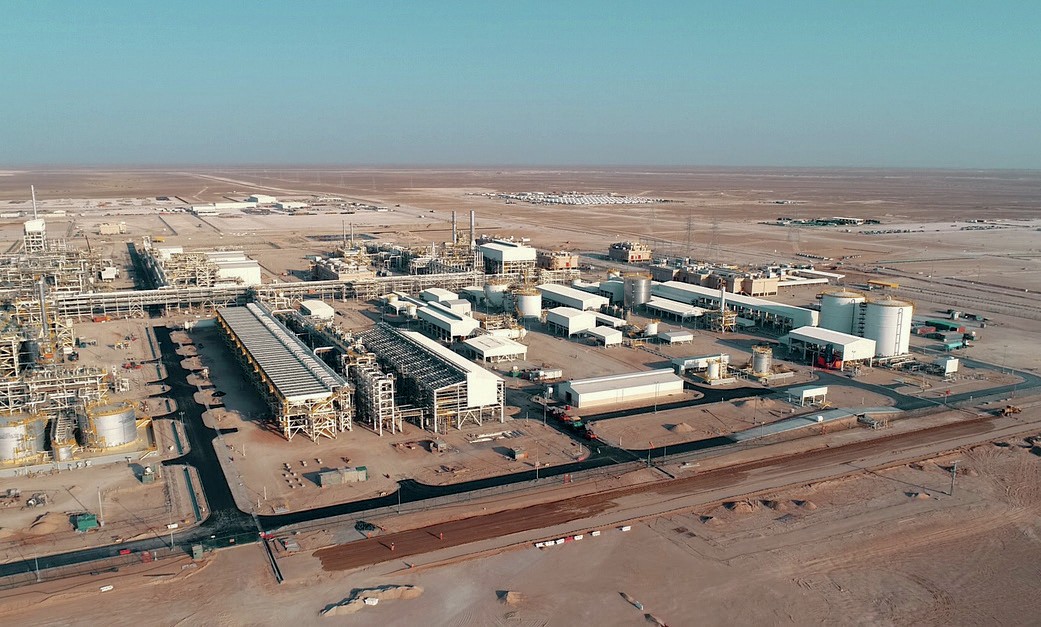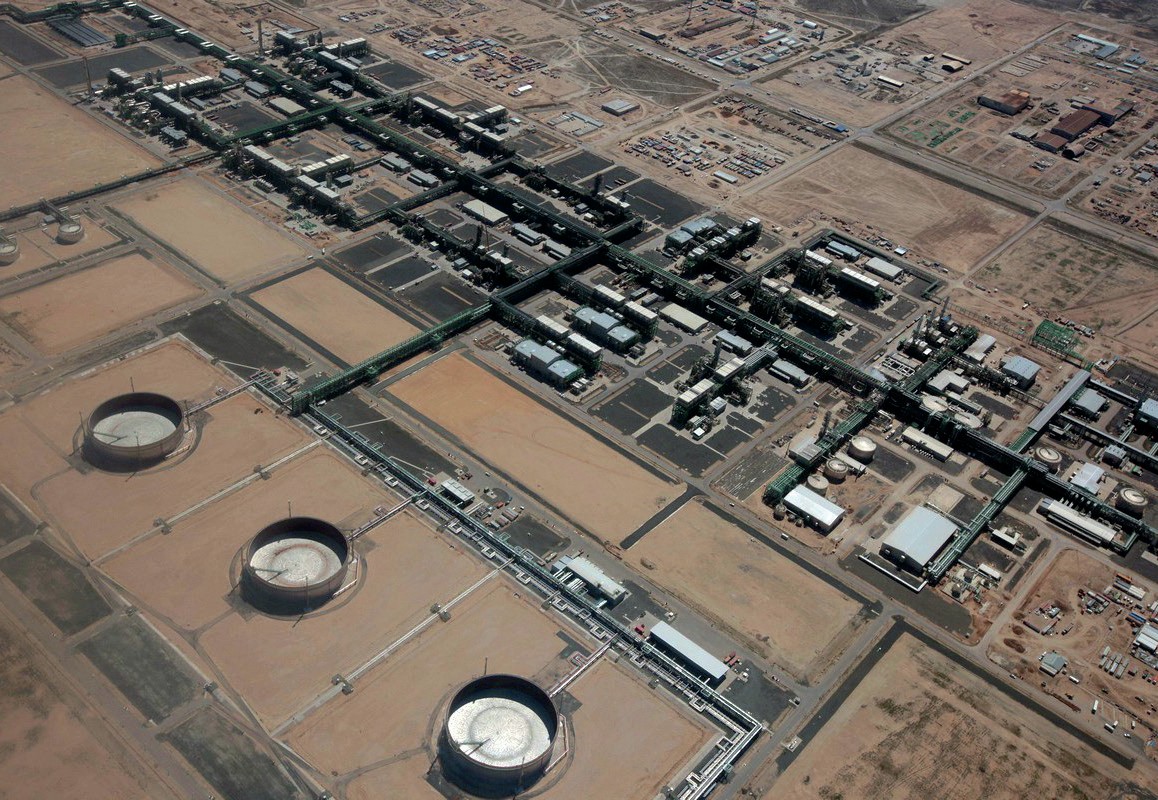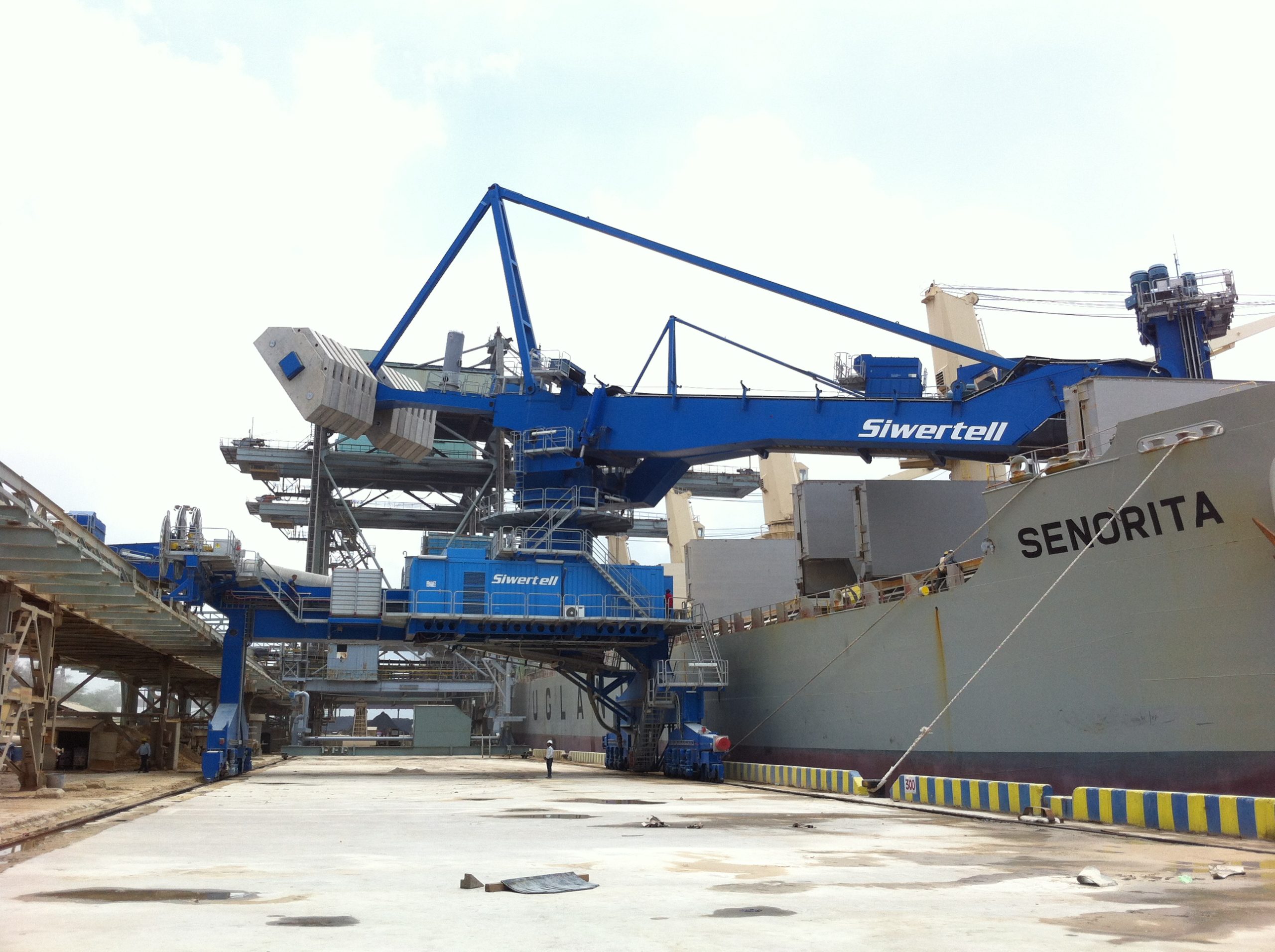Sulphur 398 Jan-Feb 2022

31 January 2022
Sulphur Industry News Roundup
WORLD
Oil demand recovering, except for aviation
Global demand for oil products has seen strong recovery in 2021, but depressed kerosene demand from the aviation sector continues to be a major barrier to full recovery, according to data and analytics company GlobalData. The company’s analysis of oil product flows suggests that when kerosene is excluded, oil product demand in Q3 2021 had fully recovered compared to the same period in 2019. However, demand for kerosene, mostly used for jet fuel, has hovered at around two thirds of pre-Covid-19 levels throughout the year, and when that is taken into account, total oil product demand was 3% below pre-Covid levels for Q3 2021. Kerosene demand saw the greatest impact from Covid-19 due to restrictions on air travel. While the sector recovered, to an extent, in the second half of 2020, recovery stalled in 2021 due to new waves of infections and restrictions, with new restrictions linked to the Omicron variant likely to have hit demand again in Q4.
Will Scargill, Managing Energy Analyst at GlobalData, commented: “China has been the driver for the global demand recovery, led by gasoline in the transport sector and continued growth in naphtha and LPG as the country expands its petrochemicals sector. Other major economies are still yet to see demand fully recover to pre-Covid-19 levels, but the strength of China’s growth plugs the gap. Still, the depressed aviation sector means a significant global demand shortfall, leaving open the prospect that we may have already seen peak oil demand – given the acceleration of energy transition to renewables.”
Diesel and Kerosene are both yet to see demand fully recover. China has not provided the same boost for diesel as other products, as the country’s use was already in decline pre-COVID-19 and global demand in Q3 2021 remained around 4% below 2019 levels. Chinese diesel demand appears to have peaked in 2015 amid moderating economic growth and a switch to cleaner fuels. Meanwhile, in developed economies road transport activity has not fully recovered and the important European market is increasingly turning away from Diesel vehicles due to air quality concerns.
“In developed economies road transport activity has not fully recovered and the important European market is increasingly turning away from Diesel vehicles due to air quality concerns.”
Nick Wyatt, Head of Research for Travel & Tourism at GlobalData added: “Continued restrictions will have a negative impact on demand for air travel. The conundrum facing airlines is deciding how much capacity to keep online in the short term. Low load factors impact profitability and many airlines are not in a position to absorb loss-making flights. Consequently, there is a risk that they will err on the side of caution and ground some of their fleets to reduce running costs if they see demand softening.”
CHINA
Sinopec starts up new alkylation unit
Ellesent Clean Technologies, the new owner of the former DuPont Clean Technologies suite, says that the STRATCO ® alkylation unit at the Fujian Refining and Petrochemical Co., Ltd refinery in Quanzhou has successfully started up and completed performance tests, certifying that the unit is meeting performance guarantees. The alkylation unit is designed to produce 7,700 bbl/d (300,000 t/a) of alkylate from a mixed butylene fluid catalytic cracker feedstock. STRATCO is a sulphuric acid-catalysed process that converts low-value, light olefins (propylene, butylene and amylene) into high-value, branched components called alkylate.
This start-up is the seventh STRATCO alkylation unit within Sinopec and allows compliance with the China VI standard which limits sulphur content in gasoline to a maximum of 10 ppm by generating low-sulphur, high-octane, low-RVP alkylate. As the world’s largest vehicle market in the world, China is committed to improving air quality in the country by introducing legislation, such as the China VI fuel standards, to reduce automobile-generated pollution. Alkylate produced by Sinopec will meet both the current China VIA fuel standard and the VIB standard expected to come into force in 2023, which further reduce the levels of benzene, aromatics and olefins in the gasoline pool. As a paraffinic hydrocarbon, alkylate plays a key role in improving air quality and public health.
“Over the last several years, we have been able to work with multiple Sinopec refineries, building an energetic relationship and providing a reliable technology solution at each site. The consistency of our technology provides Sinopec the ability to deliver high quality alkylate to the gasoline pool, decreasing the environmental impact of its fuels. It has been a pleasure to work regularly with the Sinopec organisation, a rapport that will continue throughout the lives of these seven units,” said Kevin Bockwinkel, global business manager, STRATCO Alkylation Technology.

OMAN
PDO inaugurates Yibal Khuff project
Petroleum Development Oman (PDO), the majority state owned oil and gas producer, has officially inaugurated its Yibal Khuff project (YKP), an integrated $2.6 billion oil and sour gas facility located approximately 350 km south west of Muscat. Production actually began in September 2021 from four sour oil wells drilled as part of the project. The oil is pumped to the YKP Central Processing Facility. When fully operational, the project will be delivering 5 million scf/d of natural gas and around 20,000 bbl/d of crude to meet the Sultanate’s growing medium and long- term oil and gas demands, as well as reducing PDO’s net non-associated gas import. UK-based Petrofac was selected in 2015 to oversee the development of the giant project as part of an engineering, procurement and construction management contract.
According to PDO, YKP has achieved several significant firsts, including the tallest column ever fabricated in Oman. This acid gas recovery unit absorber stands 48 metres high, four metres in diameter, and weighs 291 tonnes. The project has also included one of PDO’s first steam turbine generators, taking heat fro m some of the facilities’ processes and using it to generate steam. The plant will be able to generate 13MW of electrical power, supplementing the 45MW of the Yibal Khuff power plant.
Processing of sour gas from the project is expected to produce 235 t/d of elemental sulphur at capacity.
VENEZUELA
Belated gains in oil sands production but no overall increase in output
Venezuelan state-owned PDVSA and its foreign joint venture partners recorded average crude oil production of 560,000 bbl/d in 2021, according to an internal report. The figure is below 2020’s 570,000 bbl/d and well down on 2019’s figure of 1.0 million bbl/d. Around 60% of the oil production in 2021 came from joint ventures with foreign firms, mainly in the Orinoco oil sands belt, with the remaining 40% coming from PDVSA’s own production. Both figures were well down on the targeted figure, which had planned for production to rise back to 1 million bbl/d. According to the report, factors which had caused the lower output included recurring power failures, excess water and sulphur in the crude, deferred production due to deviations in the contractors’ work plan and delays in service contracts, and the acquisition of materials and equipment.

Four joint ventures in the Orinoco Belt increased production, starting in September when condensate imported from Iran became available for use as a diluent for the extra heavy crude: Petropiar produced 47,000 bbl/d on average for the year, Sinovensa 60,000 bbl/d, Petromonagas 64,000 bbl/d, and Petroindependencia 15,000 bbl/d. However, the figure for December showed total Orinoco output had risen to 550,000 bbl/d, and overall production 830,000 bbl/d, with crude production at the Zulia-Trujillo fields rising to 150,000 bbl/d, 40,000 up on the previous month. The 8.5% API extra-heavy crude extracted from the giant Orinoco Belt oil field can only be marketed if it undergoes an upgrading process by blending it with light crude, condensates or naphtha.
KAZAKHSTAN
Feasibility study on sour gas monetisation
North Caspian Operating Company (NCOC), operator of the Kashagan field, is partnering state run gas pipeline operator Kaztransgaz to researching options for transporting and processing of sour gas produced from the Caspian Sea. The project partners will consider proposed solutions following completion of front-end engineering design studies on planned offshore and onshore gas pipelines and an onshore gas processing plant. These studies are expected to become available between 2022 and 2023 and will enable the partners to reach a final investment decision on the first phase of a plan to expand production, according to Kaztransgaz.
The project calls for development wells to be drill into an untapped section of the Kashagan reservoir, with production from expected to begin in 2027 and add up to 50,000 bbl/d of oil production. NCOC will also produce an additional 4.2 million scf/d of sour gas. Most of that gas will be sent to shore via a proposed pipeline link and on to a processing plant with a capacity of 2 bcm/year of gas. It would be the second onshore facility to remove off-spec hydrocarbons, sulphur and hydrogen sulphide from Kashagan’s gas mixture before volumes can be sent into the main national pipeline network. Earlier this year, Kazakh contractor GPC Investment started construction of the first facility. The $1.1 billion plant aims to take 1.1 bcm of sour gas annually from Kashagan and supply about 815 million cubic metres per annum of dried gas to the trunkline network.
UNITED STATES
Refinery margins aided by cheap gas
US refining margins have been boosted over the past couple of months by the widening split between relatively low prices for sour crude compared to lower sulphur feeds, and the relatively cheap price of natural gas in US markets compared to record high prices in Europe and Asia. Inexpensive gas makes the cost of producing hydrogen to process sour crude relatively cheap, allowing US refiners to take advantage of low sour crude prices; Mexican sour Maya crude, for example, was trading nearly $10/bbl below US Light Louisiana Sweet during December 2021. Oil industry consultants OILA say that US Gulf Coast refining margins are at their highest levels for four years. Refinery sales have been boosted by increased demand for gasoline and diesel as the country recovers from the Covid pandemic.
Increased processing of sour crudes rather than the sweet crudes that had predominated as feedstocks earlier in 2021 should see sulphur production at refineries rise again. In September production was around 50,000 tonnes per month down on the 2020 figure. Even so, Argus says that it expects US domestic and global sulphur demand to outstrip spot sulphur availability and drive price rises further in early 2022. Shortages have been exacerbated by flood damage to rail lines near Vancouver and anticipated Chinese demand ahead of the Lunar new year holiday and Beijing Winter Olympics in February.
UNITED ARAB EMIRATES
Technip awarded Ghasha update contract
Technip Energies has been awarded a contract by the Abu Dhabi National Oil Company (ADNOC) to update the front-end engineering design (FEED) for the Ghasha sour gas mega-project, including the integration of carbon capture into the development. Technip said in a press statement that the overall objective of the updated FEED will be to further optimise the project costs as well as accelerate the integration of carbon capture, adding that the CO2 capture, dehydration and export will reinforce ADNOC’s decarbonisation and sustainability commitments.
The Ghasha project is a joint venture between ADNOC (50%) and Eni (25%), Wintershall (10%), OMV (5%), and Lukoil (5%). It aims to develop untapped oil and gas reserves from the Ghasha Concession fields; the world’s largest offshore sour gas development. The Concession area is expected to produce over 1.5 billion scf/d of natural gas, as well as condensate and oil. The start of production from the concession is expected in 2025, ramping up to full production by the end of the decade.
Marco Villa, Chief Operating Officer of Technip Energies, said: “We are very proud to have been awarded this FEED which will be one of the largest ultra-sour gas project Technip Energies has worked on. This award is recognition of the strong competencies in gas processing as well as the relationship and trust that ADNOC has with Technip Energies for such strategic project. As part of our energy transition journey, we will contribute to a robust design of carbon capture and transportation for enhanced oil recovery, a critical element of this project. For the past four decades, we have been committed to ADNOC through added value services and continued our commitment to expand local execution capabilities and enhance In-Country Value.”
MEXICO
Sour gas sweetening plant for Ixachi
Malaysian oil and gas services firm Coastal Contracts has agreed with Mexican exploration and production company PEP, a subsidiary of national oil company Pemex, to build an onshore gas conditioning plant at the Ixachi field in Mexico. The $1 billion project will be undertaken with Coastal Contracts’ long-term Mexican business partner, Nuvoil, through their JV Coastoil Dynamic. The joint venture began operations at its first gas conditioning facility, the Perdiz plan, in July 2021. Perdiz is also attached to the Ixachi field in Tierra Blanca, Veracruz state. Coastal Contracts said it expects the second plant, Papan, to be online by 3Q 2023, with the scope of work comprised of engineering, procurement, construction, operation and maintenance of the gas conditioning plant and its related infrastructure for the first 10 years of operation. Both gas sweetening plants have nameplate capacity to process 180 million scf/d of sour natural gas and reduce hydrogen sulphide and carbon dioxide content from 1,100 ppm to 4.25 ppm.
SAUDI ARABIA
Aramco to boost refinery sulphur recovery rates
Saudi Aramco has asked contractors who are part of its ‘long-term agreement’ (LTA) pool to submit final bids to maximise sulphur dioxide recovery rates from its Riyadh and Ras Tanura refinery projects. According to Middle East Economic Digest, the combined value of the engineering, procurement and construction (EPC) works on the two projects could be worth up to $500 million. Aramco first issued tenders for the projects in January 2021, but the bid deadline was extended first to September, November and then December 2021. The scope of work on both projects is to modify existing sulphur recovery units as well as install tail gas treatment units (TGTUs), to increase sulphur dioxide recovery at the two refineries from 96-97% to 99.95%. Front-end engineering and design work on both the Riyadh and Ras Tanura refinery projects has been done by Jacobs-ZATE, with Fluor providing licensed technologies for the project.






